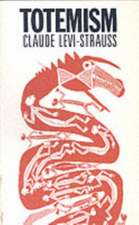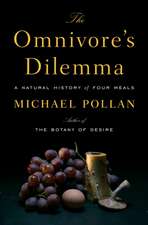Bioarchaeology of Climate Change and Violence: Ethical Considerations: SpringerBriefs in Anthropology
Autor Ryan P. Harrod, Debra L. Martinen Limba Engleză Paperback – 13 noi 2013
Preț: 376.43 lei
Nou
Puncte Express: 565
Preț estimativ în valută:
72.03€ • 77.02$ • 60.06£
72.03€ • 77.02$ • 60.06£
Carte tipărită la comandă
Livrare economică 18 aprilie-02 mai
Preluare comenzi: 021 569.72.76
Specificații
ISBN-13: 9781461492382
ISBN-10: 1461492386
Pagini: 75
Ilustrații: XV, 75 p. 12 illus.
Dimensiuni: 155 x 235 x 23 mm
Greutate: 0.14 kg
Ediția:2014
Editura: Springer
Colecția Springer
Seriile SpringerBriefs in Anthropology, Anthropology and Ethics
Locul publicării:New York, NY, United States
ISBN-10: 1461492386
Pagini: 75
Ilustrații: XV, 75 p. 12 illus.
Dimensiuni: 155 x 235 x 23 mm
Greutate: 0.14 kg
Ediția:2014
Editura: Springer
Colecția Springer
Seriile SpringerBriefs in Anthropology, Anthropology and Ethics
Locul publicării:New York, NY, United States
Public țintă
ResearchCuprins
Chapter 1: The Bioarchaeology of Climate Change and Violence: A Temporal and Cross-Cultural Approach.- Chapter 2: The Science of Climate Change.- Chapter 3: Culture and Resilience.- Chapter 4: Climate Change, Social Control and Violence in the U.S. Southwest.- Chapter 5: Beyond the Southwest: Is there a Relationship between Climate and Violence?.- Chapter 6: A Bioarchaeological Model of Climate Change and Violence.
Notă biografică
Ryan P. Harrod is assistant professor of anthropology at the University of Alaska Anchorage.
Debra L. Martin is the Lincy professor of anthropology at the University of Nevada, Las Vegas. Prior collaborations include the coedited volume. The Bioarchaeology of Violence and the coauthored book Bioarchaeology: An Integrated Approach to Working with Human Remains.
Debra L. Martin is the Lincy professor of anthropology at the University of Nevada, Las Vegas. Prior collaborations include the coedited volume. The Bioarchaeology of Violence and the coauthored book Bioarchaeology: An Integrated Approach to Working with Human Remains.
Textul de pe ultima copertă
The goal of this monograph is to emphasize with empirical data the complexity of the relationship between climate change and violence. Bioarchaeology is the integration of human skeletal remains from ancient societies with the cultural and environmental context. Information on mortality, disease, diet and other factors provide important data to examine long chronologies of human existence, particularly during periods of droughts and life-threatening climate changes. Case studies are used to reconstruct the responses and short and long-term adaptations made by groups before, during and after dramatic changes in weather and climate. Interpersonal and group violence is also analyzed. The authors find that while in some cases there is an increase in trauma and violence, in other cases there is not. Human groups are capable of avoiding violent altercations and increasing broad networks of cooperation that help to mitigate the effects of climate change. A case study from the U.S. Southwest is provided that shows the variable and surprising ways that ancient farmers in the past dealt with long term droughts.
Caracteristici
Integrates theory, method and data in the area of climate change and violence Provides a wealth of methodological standards on how to integrate skeletal analysis with research related to environmental change Incorporates detailed information on measures of climatic variation and signatures of violence Includes supplementary material: sn.pub/extras



























